Introduction:
Mammoths are extinct relatives of today’s elephants.
Mammoths were first described in 1799 by German scientist Johann Friedrich Blumenback. He gave the name Elephas primigenius to elephant-like bones found in Europe. Both Blumenback and Baron Georges Cuvier of France independently concluded that the bones belonged to an extinct species. The bones belonged to the woolly mammoth, which was later considered a genus of its own and was therefore renamed Mammuthus primigenius.
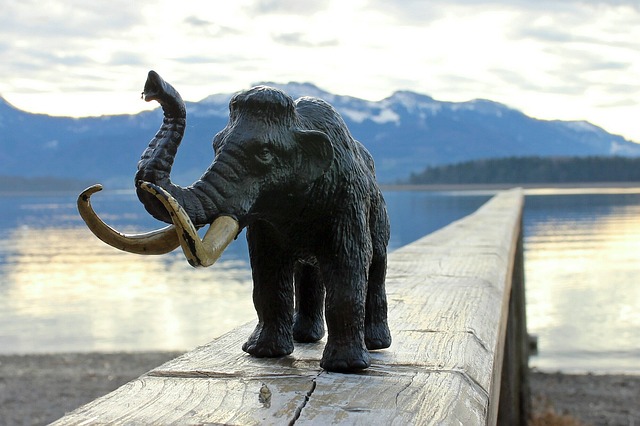
Mammoth Evolution:
These mammoths lived in North Africa and disappeared about 3 to 4 million years ago. The offspring of such mammoths moved north and finally covered most of Eurasia. These were M. meridionalis, “southern mammoths”.
In the advance Quaternary period, all over 1.8 million years ago, M. Meridionalis took advantage of low sea levels and reached North America via a temporary land bridge across the Bering Strait. The southern mammoth then radiated across North America. During the Middle Pleistocene, a new North American species developed, the imperial mammoth, M. imperator. Then, in the late Pleistocene, the Columbian mammoth M. columbi came into view. Its range extended across what is now the United States and as far south as Nicaragua and Honduras.
Another mammoth species, the steppe mammoth (M. trogontherii), lived in Eurasia between 200,000 and 135,000 years ago. And later during the Pleistocene, the woolly mammoth (M. primigenius), which was incidentally the smallest mammoth, made its debut. With the advent of a new ice age and low sea levels that lasted 35,000 to 18,000 years ago, woolly mammoths were able to reach North America via a new land corridor across the Bering Strait. The southern migration of woolly mammoths extended as far south as present-day Kansas.
Dwarf forms of mammoths are known from fossils found on islands: M. exilis from the California Channel Islands was only about 1.20 to 1.80 m tall at the shoulder.
Many believe that mammoths disappeared due to climate change, disease, human hunting, or perhaps a combination. It’s still a bit puzzling.
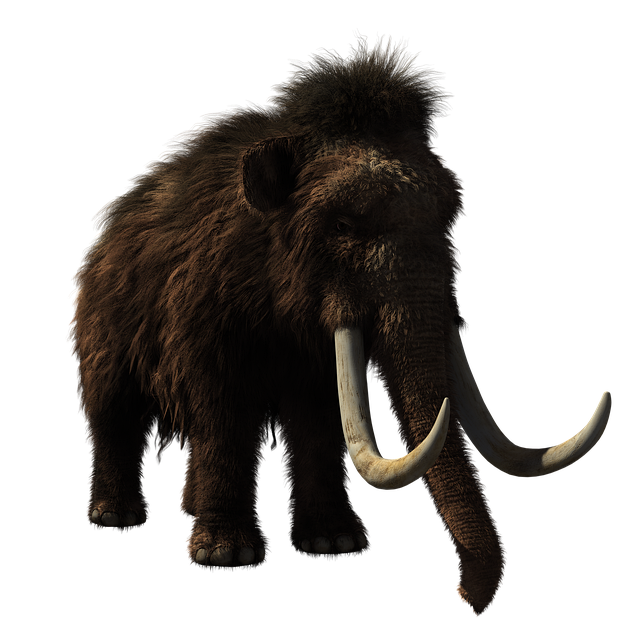
Something to chew on:
Although mammoths resembled elephants in their eating habits, they were still very remarkable animals. the following variety about the latest elephants:
1: Spend 16 to 18 hours a day eating or searching for a source of food or water.
2: Eat between 60 and 300 kg of food daily.
3: Drink between 60 and 160 liters of water every day.
4: Produce between 140 and 180 kg of manure per day.
5: Seeing that most mammoths were larger than the latest elephants, these numbers must have been higher for mammoths!
According to preserved Columbian mammoth dung found in a cave in Utah, a mammoth’s diet consisted mainly of grasses, grains, and shrubs. Only 5% contained saltbush wood and fruits, cactus fragments, sedge, water birch, and blue spruce. While the Colombian mammoth was primarily a grazer, it also roamed somewhat.
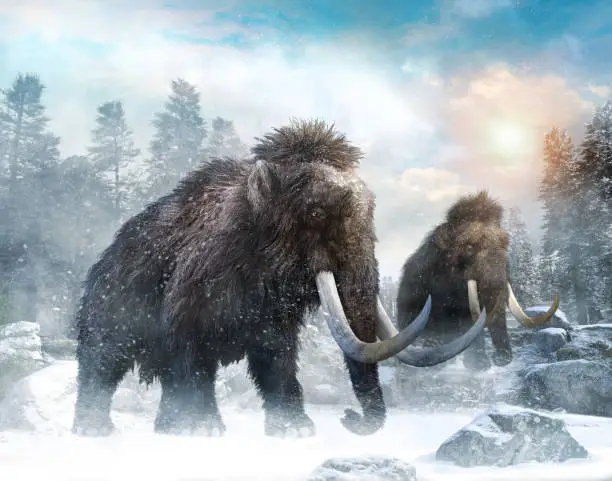
BIJELIZABETH HILRANK:
If you were outside 20,000 years ago, you probably needed a winter coat even in the summer. This is because the Earth lived through an ice age: a time when ice sheets covered large parts of North America, Europe, and Asia. It was also a time when humans lived alongside a now-extinct group of elephants, the mammoths.
Old Elephant:
One species, the woolly mammoth, roamed the cold tundra of Europe, Asia, and North America from about 300,000 to about 10,000 years ago. (However, the last known group of woolly mammoths survived until about 1650 BC – that’s more than a thousand years after the pyramids of Giza were built!)
These animals grazed on plants and used their 15-foot-long tusks to dig in the snow for food such as shrubs and grass. Like today’s elephants, woolly mammoths probably gave birth to one calf at a time, and the females and their young traveled in herds of about fifteen individuals. Mammut Thanar left the herd at the age of 10.
Ready for snow:
Woolly mammoths were probably about the same size as African elephants and about 4 meters tall. In contrast, woolly mammoths had much smaller ears, so they did not lose body heat. They were also covered with two layers of fur: the shaggy outer layer could be up to 50 cm long and kept them comfortably warm in temperatures as low as minus 20 °C. Woolly mammoths also had a hump on their backs, which scientists say were fat stores that provided energy when food was scarce, similar to a camel’s hump.
Scientists aren’t sure why woolly mammoths died out: Some think humans hunted too many of them, and others think they couldn’t survive Earth’s naturally warming climate. Or it could have been a combination of both.
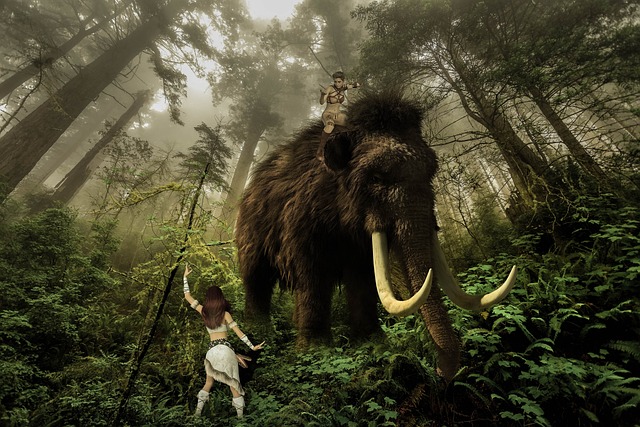
EAT:
Mastodons are closely related to mammoths but feed on them. They were browsers: they ate leaves. Do you notice the difference in the shape of the cheek teeth?
We chew our food by moving our jaws up and down and back and forth. Mammoths chewed their food differently. They chewed by placing grass between their upper and lower molars, moving the lower jaw forward, lowering the jaw, moving it back, and repeating again – a sort of grinding motion. This chewing method is very suitable for cutting grass. Attempt. How would it feel to chew this way?
Behave:
It is believed that these creatures lived in family herds. They migrated between food sources throughout the year. Their behavior was more or less similar to that of modern elephants and they used their trunks and tusks when searching for food, fighting enemies, or manipulating objects.
Facts:
1 The woolly mammoth is genetically related to the Asian elephant and not to its African counterpart.
2 These creatures appear in prehistoric cave paintings discovered in several places in Europe, including Britain, Spain, and France.
3 The woolly mammoth appears in several old tribal legends in Siberia and North America.
4 This mammoth’s ears were shorter than those of modern elephants.
5 During a 2013 excavation, the frozen mammoth meat excavated from the ice cap was said to be so fresh that even a scientist could eat a bite of it.

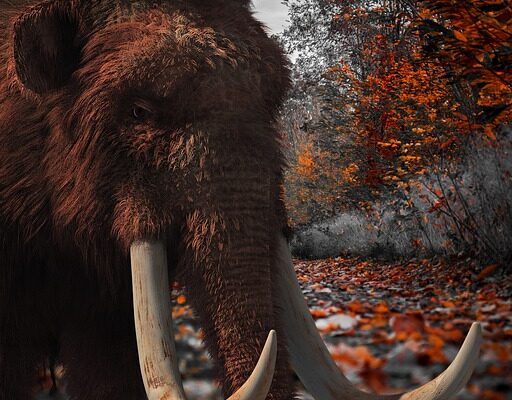

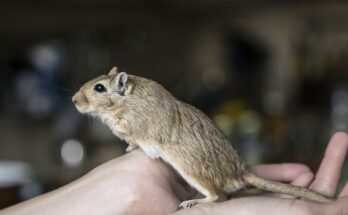

I wonder what would have happened if this animal was not extinct